 A 3,600 year elliptical orbit, spinning the blue marbled ball across the solar system, beyond Pluto and further, and then back again, forever hiding itself within the immense voids between planet and star. Helplessly or willingly, the Annunaki cling to this hurling mirror of another small watery world that lies in a circular orbit around the sun. Once, in a time long ago, those known as our own Sumerian Gods, the Annunaki ventured off of their world in an ambassadorial mission to Earth.
A 3,600 year elliptical orbit, spinning the blue marbled ball across the solar system, beyond Pluto and further, and then back again, forever hiding itself within the immense voids between planet and star. Helplessly or willingly, the Annunaki cling to this hurling mirror of another small watery world that lies in a circular orbit around the sun. Once, in a time long ago, those known as our own Sumerian Gods, the Annunaki ventured off of their world in an ambassadorial mission to Earth.
The Annunaki fooled us though, ambassadors they were not; they came seeking gold and ore and sought to imprison humanity in eternal slavery. They brought with them their abominations, the Nephilim, and through them began engineering a master race of slave drivers.[1]
All this according to Zecharia Sitchin, and in my current mood, I want so badly to believe; I want to be as certain as he, that during the coming 2012 cleansing, we will be witness to the return of the Annunaki, as their mysterious planet, Nibiru, comes within striking distance of our celestial home.
Alas, I am no such believer.
Zecharia Sitchin, as he’s so obdurately accused, has mistranslated, misinformed and mislead in his study and seriously prolific writings on the subject of Nibiru and the Annunaki.[2]
I could do as so many have done before me; far more learned and qualified people than I have criticised, berated, ridiculed and mocked Sitchin for his, admittedly, wild assertions about Mesopotamian history and the meaning of that history as it relates to new age ideas of creation and human development.
I see Sitchin as an unwitting prophet, his theories and arguments have been planted in the psyche of a generation of new agers, of chanters and mumu wearing star gazers. He has instilled in them a desire to turn his writings into prophecies, in turn disseminating his flawed ideas into the mainstream of paranormal culture. He is, if not complicit in this process, at least a catalyst for much of the 2012 Armageddon hype, as confusing and inaccurate as it is.
Sitchin is not directly responsible for any part of the 2012 legend, early Mesoamerica was not his specialty, and near as I can tell, he hasn’t had any notable professional interest in South American history at all. However, much of his writing has been confused into the 2012 legend, blurring the lines of what is real and what is entirely false. As detailed in one of my earlier articles, there is some basis in fact for at least a portion of the 2012 mystery, though the facts don’t point to alien invasion or unveiling, they don’t point to Armageddon, and they don’t point (at least directly) to a spiritual ascendance.[3]
What Sitchin has done is weave a broad tapestry of fictional pseudo-science, and hung it in the gallery of the global public. His stories have compelled the layman reader to steadfast belief without evidence. They will claim that his so-called expertise in Mesopotamian history and ancient languages is all the evidence anyone should need to believe his theories; that he is a source of academic and spiritual enlightenment and should be believed without question.[4]
On that issue, I leave you to your own devices, as my beliefs are relatively evident.
Where I want to take this piece is along the route to a deeper understanding of the contamination of three main historical-cultural mythologies by the works of people such as Sitchin.
1) Annunaki
2) Nibiru
3) Nephilim
Many readers will be finding a common theme with the above list, naturally coming to believe that there is some innate connection between all three of those characters, and in some ways there is, but that connection is not historical or factual.
While it is true that each idea is rooted in some historical fact, their origins are far from where modern literary fancies have taken them. Each are, in their own right, significant cultural icons for early Mesopotamian peoples, so much so that two of the three were included in Biblical scripts as truths (though again, without a factual accounting of their meaning).
A God By Any Other Name
The Annunaki, an early Sumerian word generally referring to a caste of Sumerian, Akkadian and Babylonian deities or Gods, variously known to the cultures of Mesopotamia as a convention of deistic entities of varying importance.
According to some scholars, namely Jeremy Black and Anthony Green, the Annunaki were a founding principle in the formation of an underworld class of deities within all of the major Mesopotamian belief systems, possibly composing or leading to the traditional religious opposition of heaven and hell.
It does seem somewhat natural to move from what little we really know about the source of Sumerian religious mythology, to fantastic notions of alien oppressors from another unknown planet, but such an idea is not supported by other factors of Sumerian culture.[5] Sitchin’s use of the word Annunaki to represent alien protagonists in the story of human evolution is unfounded, and as pointed out by such respected scholars as Michael Heiser, is a simple, yet profound mistranslation. A mistake so rudimentary, according to Heiser, that one can scarcely believe Sitchin didn’t make it deliberately, so as to found his theorem in the waters of muddied facts.
The Lost Planet
Nibiru is the pet name of an oft-claimed imaginary planet which is rumoured to exist somewhere on the other side of the sun. As described in the opening paragraph, Nibiru’s orbit is said to be an enormous elliptical arch, sending this planet, which by all accounts is a near perfect analog for Earth, far beyond the boundaries of the known solar system, past Pluto and into the cold darkness of deep space before finally returning to the warming embrace of our Sun’s rays some 3,600 years later.
One doesn’t need to be an astrophysicist to see a fatal flaw in that line of scattered reasoning. Before we even consider the popular notion that that the Annunaki are the ancient inhabitants of Nibiru, we can count certain parts of the Nibiru myth right out of the picture.
The Earth’s orbit around the sun, which takes exactly 365.242199 mean solar days, or 1 sidereal year, keeps us at a cozy distance of approximately 150 million kilometres from the sun.[6] That distance is one very important factor in this debate, and in the raging debate about whether life could possibly exist on any other planet in our solar system. For you see, it is that distance that allows us to exist; if our orbit were to take us any closer to the sun, we would be incinerated, any further away and we’d be popsicles.
So, for a planet that is purported to be a suitable analog for Earth, containing comparable amounts of liquid water, a heated core and cyclical weather patterns that are dependent on gravity and temperature, Nibiru is up the creek without a paddler.
 A 3,600 year elliptical orbit would mean that Nibiru is frozen solid for nearly ¾ of its planetary life, thawing only during the leg of its journey that brings it within 150 million kilometres of the Sun.
A 3,600 year elliptical orbit would mean that Nibiru is frozen solid for nearly ¾ of its planetary life, thawing only during the leg of its journey that brings it within 150 million kilometres of the Sun.
Is it possible for the planet to exist under these cosmic conditions? Yes, but it seems impossible for an advanced and comparable species of humanoid life to have evolved on a planet with such drastically changing surface conditions. Even if life on Nibiru (suspending our disbelief for a moment to take for granted the fact that Nibiru does exist) were able to evolve through the use of geothermal or some other heretofore unknown means of remaining animate in such frozen conditions, so much of that life’s potential energy would be spent just trying to exist, that off world travel might likely be inconsequential. Though, and this is yet another leap, if life did find a way to evolve into a sentient humanoid form, and that humanoid species saw fit to leave Nibiru and visit Earth, it seems likely that our consistently temperate climate would be incompatible with that species own biological requirements.
Again, none of this speaks to the possibility of an as yet undiscovered planet, called Nibiru existing in our solar system. It could be said that such a long orbit, relative to the human capability to observe and map our planetary neighbours, might have gone unnoticed, especially if the vast majority of that orbital path lies beyond our ability to view. However, all things considered, it does seem somewhat unlikely considering that among the eight planets of our solar system, not one holds an orbit even remotely similar to that described as the orbit of Nibiru.[7]
The popular alternative to the idea that Nibiru exists in a wide elliptical orbit, is that it exists in a circular orbit on the opposite side of the sun, at a comparable distance and speed as the Earth, so that never the twain shall meet; but this is not an idea credited to Sitchin. And to quote the inimitable Bertrand Russell:
“If I were to suggest that between the Earth and Mars there is a china teapot revolving about the sun in an elliptical orbit, nobody would be able to disprove my assertion provided I were careful to add that the teapot is too small to be revealed even by our most powerful telescopes. But if I were to go on to say that, since my assertion cannot be disproved, it is an intolerable presumption on the part of human reason to doubt it, I should rightly be thought to be talking nonsense. If, however, the existence of such a teapot were affirmed in ancient books, taught as the sacred truth every Sunday, and instilled into the minds of children at school, hesitation to believe in its existence would become a mark of eccentricity and entitle the doubter to the attentions of the psychiatrist in an enlightened age or of the Inquisitor in an earlier time.” [8]
The Sons of God and the Daughters of Men
The Ancient Astronaut Theory, while not credited to Zecharia Sitchin alone, is the leading culprit in the issue of Sitchin’s current level of fame. His writings on the Ancient Astronauts are epic, and though they are entertaining, they should be taken with a slight more than just a single grain of salt.
Sitchin, and many of his devout followers, would like you to believe that the Annunaki, some 450,000 years ago, travelled to Earth in search of gold (for whatever reason). Upon arriving, they apparently found prehistoric man and decided that our Neanderthal brethren were suitable for enslavement in their gold mines. This wasn’t enough, however, and the Annunaki undertook to create a Neanderthal/Annunaki hybrid through super advanced genetic manipulation, the result of which was the Nephilim.
It’s no mere coincidence that Sitchin chose the personification of the biblical giants as the product of his Ancient Astronaut theory; the Nephilim mystery has confounded biblical scholars, linguists and historians for centuries. The Nephilim are mentioned several times throughout the Bible, in accounts that seem too realistic to ignore. But where does the connection to the Annunaki and Nibiru come from? Your guess is as good as mine.
It would seem that Sitchin has fabricated a connection, based on false logic, and ultimately on his own mistaken translation of the word Annunaki. Biblical reference to the Nephilim suggests that this race of giants was the offspring of fallen angels, as they mated with human women. Their resulting progeny were said to be giants, whose size and strength were renowned.
Ok, I’ll admit that there is a similarity to the story lines and that with Sitchin’s subtle suggestion, we can see how the Sons of God (the fallen angel progenitors of the Nephilim) bear some superficial resemblance to the described Annunaki, but unfortunately, that’s as far as the connection goes.
No where else are the Sons of God mentioned, no where else is there any information about who or what they were, or if they were even anything more than the metaphorical representation of human royalty from the perspective of the Bible’s author(s). To Sitchin, this false connection to the Nephilim of the Bible is a very happy misconception of the truth, one that serves to solidify his position and the background of his theory.
Could there have been an extraterrestrial race of ancient astronauts who visited Earth from the sometimes near, but typically far away planet Nibiru? Yes, there could have been, but evidence does not support that case. Even critical examination of the story at hand denies the Annunaki their place as the founders of humanity.
Gold, as a basic and relatively common ore (in contrast to other elements found both on and off the Earth) seems a strangely human pursuit. The idea that the Annunaki would travel interstellar distances to mine something as superficial as gold is a little difficult to swallow, though if you look a little deeper, that pill gets even harder to take.
Taking for granted all of the things we have to, to get to a point where we can hypothesis on the Annunaki’s motives and practises, lets consider that in order to get here (Earth), they would have to have constructed a vessel capable of travelling some multiple trillions of kilometres, with the same limits on interstellar travel as we face. Quite a feat indeed. Next consider that once they arrived, and their fancy turned to our prehistoric ancestors, they concocted a complex and technologically advanced method for cross breeding with early humans. Again, bravo to the Annunaki for their achievements. So, with all of their technological know-how, their prowess with mechanical engineering and biological manipulation, they couldn’t find a better way to mine gold than through manual (slave) labour?
I apologise for leading you down that garden path, but now that you’re here, isn’t it nice?
You see, all of this boils down to a story, based on one misplaced assumption. The Annunaki were Sumerian deities; they were not a real race of beings, they were not our intergalactic neighbours. They did not create the Nephilim (if the Nelhilim even truly existed) and they did not come from a hidden planet that spends so much time beyond the reach of our Sun’s rays that its would remain a solid ball of ice for nearly the entire time it would ever have taken for any life to form on its surface.
I’m not interested in beating an already dead horse, but it seems that this one just won’t stay down.
[1] Source: The 12th Planet (Earth Chronicles Part 1), Zecharia Sitchin
[2] See: www.sitchiniswrong.com, by Michael S. Heiser
[3] Paranormal People: 2012; The End of the World…or is it?
[4] See: http://www.halexandria.org/dward195.htm
[5] Gods, Demons and Symbols of Ancient Mesopotamia; An Illustrated Dictionary By Jeremy Black and Anthony Green
[6] Source: Wikipedia article: Earth’s Orbit; http://en.wikipedia.org/wiki/Earth’s_orbit
[7] Eight planets, not including Pluto, and not taking into account the many asteroids, comets and meteoric fragments whose orbits take them on elliptical paths through and out of our solar system
[8] Russell’s Teapot / The Celestial Teapot, from the philosopher Bertrand Russell (1872-1970) http://en.wikipedia.org/wiki/Russell’s_teapot
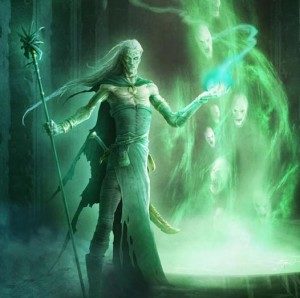 Swathed in thick smoke and fog, his boney hands worked their practised craft over the elements of his deeply hidden alter. Black candle wax dripped over the table top and a murmuring chant slipped over his lips and out from under his twill grey hood. The Necromancer exerted his craft, for what purpose we may never know, but you can be sure he toiled only for sinister gain or secret vengeance.
Swathed in thick smoke and fog, his boney hands worked their practised craft over the elements of his deeply hidden alter. Black candle wax dripped over the table top and a murmuring chant slipped over his lips and out from under his twill grey hood. The Necromancer exerted his craft, for what purpose we may never know, but you can be sure he toiled only for sinister gain or secret vengeance. Through the Middle-Ages, as divination -a direct undertaking of spiritual manipulation for gain, and a classical example of the ancient definition of necromancy- became known as a demonic practice, by way of the growing influence of the Roman Catholic teachings. The word as well as all of the rituals and practises covered under the growing umbrella definition of the term necromancy became heretic, even though a significant portion of European cultures retained at least nominal knowledge and proficiency in wards, hexes and divination.
Through the Middle-Ages, as divination -a direct undertaking of spiritual manipulation for gain, and a classical example of the ancient definition of necromancy- became known as a demonic practice, by way of the growing influence of the Roman Catholic teachings. The word as well as all of the rituals and practises covered under the growing umbrella definition of the term necromancy became heretic, even though a significant portion of European cultures retained at least nominal knowledge and proficiency in wards, hexes and divination.![]() The evolution of a word can have a drastic impact on the reality of its meaning and its influence on other cultural definitions. Examples of the word and its derivatives can be found in scores in recent and current literature; The Necronomicon, a book with no connection to the historical reality of its name; also the popular idea that a Necromancer is a magical being, who raises the dead and/or consumes the spirits of the recently dead, as made popular by the invention of comic books and video game storylines; even the idea that necromancy is, by nature, an evil practise.
The evolution of a word can have a drastic impact on the reality of its meaning and its influence on other cultural definitions. Examples of the word and its derivatives can be found in scores in recent and current literature; The Necronomicon, a book with no connection to the historical reality of its name; also the popular idea that a Necromancer is a magical being, who raises the dead and/or consumes the spirits of the recently dead, as made popular by the invention of comic books and video game storylines; even the idea that necromancy is, by nature, an evil practise.





 The Nephilim, born of the Son’s of God and the daughter’s of men, giants in our history, fallen angels who suffered the wrath of The Almighty in the Great Flood; were the Nephilim a race of archangels, intent on mixing their seed with the lines of God’s children?
The Nephilim, born of the Son’s of God and the daughter’s of men, giants in our history, fallen angels who suffered the wrath of The Almighty in the Great Flood; were the Nephilim a race of archangels, intent on mixing their seed with the lines of God’s children?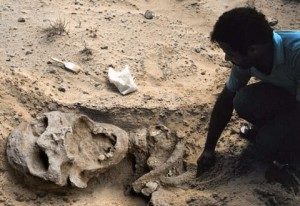 The Nephilim themselves are an interesting study, and discoveries have been made in modern time, which point to the truth of their existence. For instance; in the late 1950’s, during road construction in the Euphrates Valley of south-east Turkey, many tombs containing the remains of giants were uncovered. At the sites the leg bones were measured to be 120 cms (47.24 inches). Joe Taylor, Director of Mt. Blanco Fossil Museum, was commissioned to sculpt the human femur. This giant stood some 14-16 ft tall. In his book Fossils Facts & Fantasies, Joe Taylor cites several accounts of giant human skeletons or depictions being discovered, from Egypt, Italy, Patagonia in Argentina, and the western US.
The Nephilim themselves are an interesting study, and discoveries have been made in modern time, which point to the truth of their existence. For instance; in the late 1950’s, during road construction in the Euphrates Valley of south-east Turkey, many tombs containing the remains of giants were uncovered. At the sites the leg bones were measured to be 120 cms (47.24 inches). Joe Taylor, Director of Mt. Blanco Fossil Museum, was commissioned to sculpt the human femur. This giant stood some 14-16 ft tall. In his book Fossils Facts & Fantasies, Joe Taylor cites several accounts of giant human skeletons or depictions being discovered, from Egypt, Italy, Patagonia in Argentina, and the western US. The very idea that the writers of these Biblical verses, recognised the danger in interbreeding between humans and the mystery beings, insofar as they incorporated an ultimate punishment for the invasion, is astonishing. Not surprisingly, I do not accept the wrath of God explanation, but I see through the metaphor and call to your attention to the fact that once the interbreeding began, the Sons of God were not mentioned again, much the same way as our own encounters with extraterrestrials remain shrouded in mystery and conspiracy.
The very idea that the writers of these Biblical verses, recognised the danger in interbreeding between humans and the mystery beings, insofar as they incorporated an ultimate punishment for the invasion, is astonishing. Not surprisingly, I do not accept the wrath of God explanation, but I see through the metaphor and call to your attention to the fact that once the interbreeding began, the Sons of God were not mentioned again, much the same way as our own encounters with extraterrestrials remain shrouded in mystery and conspiracy.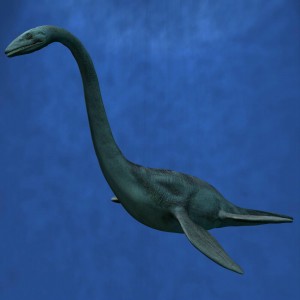


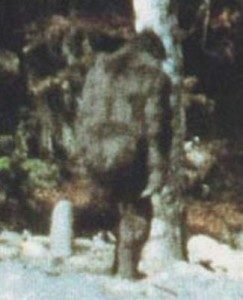 Cryptozoology, being the study of unknown creatures, is a strange world of speculation, assumption, wild theorising and an enormous catalogue of potential candidates of interest all around the globe.
Cryptozoology, being the study of unknown creatures, is a strange world of speculation, assumption, wild theorising and an enormous catalogue of potential candidates of interest all around the globe.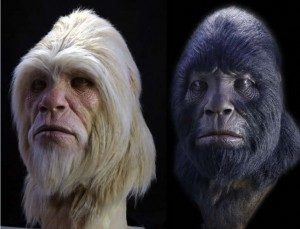 In spite of all the harm that Hollywood has done to the cause of finding and documenting wild men in various parts of the world, the legends carry on. Wild-man folk lore may be the most prevalent cryptozoological phenomenon on the planet. Even in the relatively confined continental space of the United States, there exists a wide range of wild-men theories and traditions. From the traditional north-western idea of Bigfoot or Sasquatch (as named by First Nations people of North America) to the Ohio Grassman and the Fouke Monster of Boggy Creek/Fouke, Arkansas, there is no shortage of material to investigate.
In spite of all the harm that Hollywood has done to the cause of finding and documenting wild men in various parts of the world, the legends carry on. Wild-man folk lore may be the most prevalent cryptozoological phenomenon on the planet. Even in the relatively confined continental space of the United States, there exists a wide range of wild-men theories and traditions. From the traditional north-western idea of Bigfoot or Sasquatch (as named by First Nations people of North America) to the Ohio Grassman and the Fouke Monster of Boggy Creek/Fouke, Arkansas, there is no shortage of material to investigate.

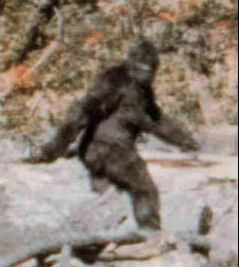 Since the presentation of the Patterson Video from October 20th, 1967, Bigfoot mania has swept the globe. As a cultural phenomenon, or more accurately, an urban legend, Bigfoot’s popularity has skyrocketed, since that cold autumn day, when two business associates, Roger Patterson and Robert Gimlin, happened to encounter what is arguably the most controversial anthropological find of modern science.
Since the presentation of the Patterson Video from October 20th, 1967, Bigfoot mania has swept the globe. As a cultural phenomenon, or more accurately, an urban legend, Bigfoot’s popularity has skyrocketed, since that cold autumn day, when two business associates, Roger Patterson and Robert Gimlin, happened to encounter what is arguably the most controversial anthropological find of modern science. Seldom does one come across such a sensational, yet neatly wound, string of fantasy as this. I recently stumbled upon an article, which was a lengthy excerpt from a website, no longer operating, by a Mr.Marius Boirayon; Research Director of the Solomon Anthropological Expedition Trust Board Incorporated. (
Seldom does one come across such a sensational, yet neatly wound, string of fantasy as this. I recently stumbled upon an article, which was a lengthy excerpt from a website, no longer operating, by a Mr.Marius Boirayon; Research Director of the Solomon Anthropological Expedition Trust Board Incorporated. (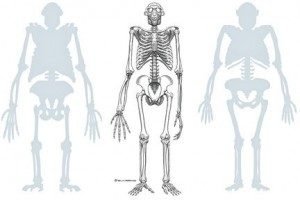 Since her discovery late in the field season of 1974, by French Geologist Maurice Taieb and American Anthropologist Donald Johansen, AL 288-1 has been the gold standard of evolutionary discussion regarding the origins of humanity on Earth. You might not recognise her by the reference number given to her in the field, but I’m sure you’re more familiar with her nickname; ‘Lucy’.
Since her discovery late in the field season of 1974, by French Geologist Maurice Taieb and American Anthropologist Donald Johansen, AL 288-1 has been the gold standard of evolutionary discussion regarding the origins of humanity on Earth. You might not recognise her by the reference number given to her in the field, but I’m sure you’re more familiar with her nickname; ‘Lucy’.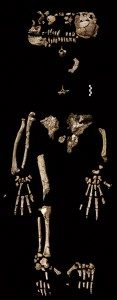
![graph[1] graph[1]](http://web.archive.org/web/20100726011346im_/http://www.paranormalpeopleonline.com/wp-content/uploads/2009/11/graph1.jpg)

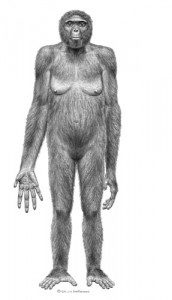 Why were we humans the only species on the planet to develop bipedal locomotion? Anthropologically speaking, the development of bipedal locomotion was the single most beneficial trait of our ancestors, leading to all of our current biological advantages, (i.e. big brain, prehensile dexterity, language etc.) which would seem to suggest that any other species which underwent the same bipedal development had an equal chance of achieving the same success, yet none did.
Why were we humans the only species on the planet to develop bipedal locomotion? Anthropologically speaking, the development of bipedal locomotion was the single most beneficial trait of our ancestors, leading to all of our current biological advantages, (i.e. big brain, prehensile dexterity, language etc.) which would seem to suggest that any other species which underwent the same bipedal development had an equal chance of achieving the same success, yet none did.